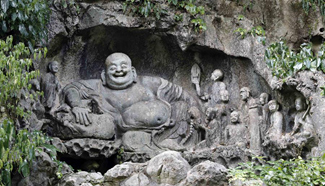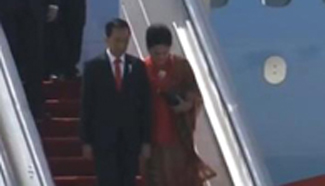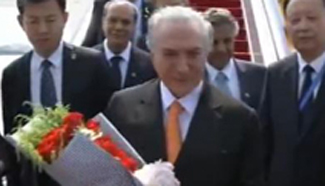SAN FRANCISCO, Sept. 2 (Xinhua) -- A new study has tried to explain that despite long-term warming across most of the globe, some regions can experience colder than normal temperatures associated with anomalous circulation patterns that drive cold air from Earth's poles to the mid-latitudes.
"Although the occurrence of cold extremes is often used as evidence to dismiss the existence of human-caused global warming, our work shows that the warm West (in the United States), cool East trend is actually consistent with the influence of human activities that have modified Earth's climate in recent decades," said Deepti Singh, a former graduate student at Stanford University who is now at Columbia University's Lamont-Doherty Earth Observatory.
Led by Stanford and published in Journal of Geophysical Research Atmospheres, the study, with Singh as lead author, probes the simultaneous occurrence of warm winters in the Western United States and cold winters in the East in recent decades.
"There's this idea that the past few winters were more extreme than usual, particularly since the conditions in the East and West were so different," said Noah Diffenbaugh, an associate professor of Earth system science at the School of Earth, Energy & Environmental Sciences and a senior fellow at the Woods Institute for the Environment of Stanford.
As senior author of the study, Diffenbaugh noted that "looking back at temperature data from the past 35 years, we've found that in fact 2013-2014 and 2014-2015 did have the biggest difference in winter temperature between the East and West."
The study finds that the occurrence and severity of "warm West, cold East" winter events increased significantly between 1980 and 2015, partly because the winter temperature has warmed more in the West than in the East, increasing the odds that warm days in the West coincide with cold days in the East. Along with warming of the West, a "ridge-trough" pattern of high atmospheric pressure in the West and low atmospheric pressure in the East has also been producing greater numbers of winter days on which large areas of the West and East experience extreme temperatures at the same time.
"What we've found is that this particular atmospheric configuration connects the cold extremes in the East to the occurrence of warm extremes in the West," Singh was quoted as saying in a Stanford news release.
As the researchers believe circulation patterns that facilitate such extremes are potentially a response to enhanced warming, the simultaneous occurrence of extreme western warmth and extreme eastern cold will likely decrease if global warming continues through the 21st century, because warming of winters in both the West and East will likely reduce the occurrence of cold winters in the East.
Still, the researchers project that some extremely cold events will still occur even with high levels of global warming. "We can absolutely expect further increases in hot events if global warming continues," Diffenbaugh said. "But our results also highlight how complex climate change can be. We should be prepared for both warm and cold extremes -- sometimes simultaneously -- now and in the future."










